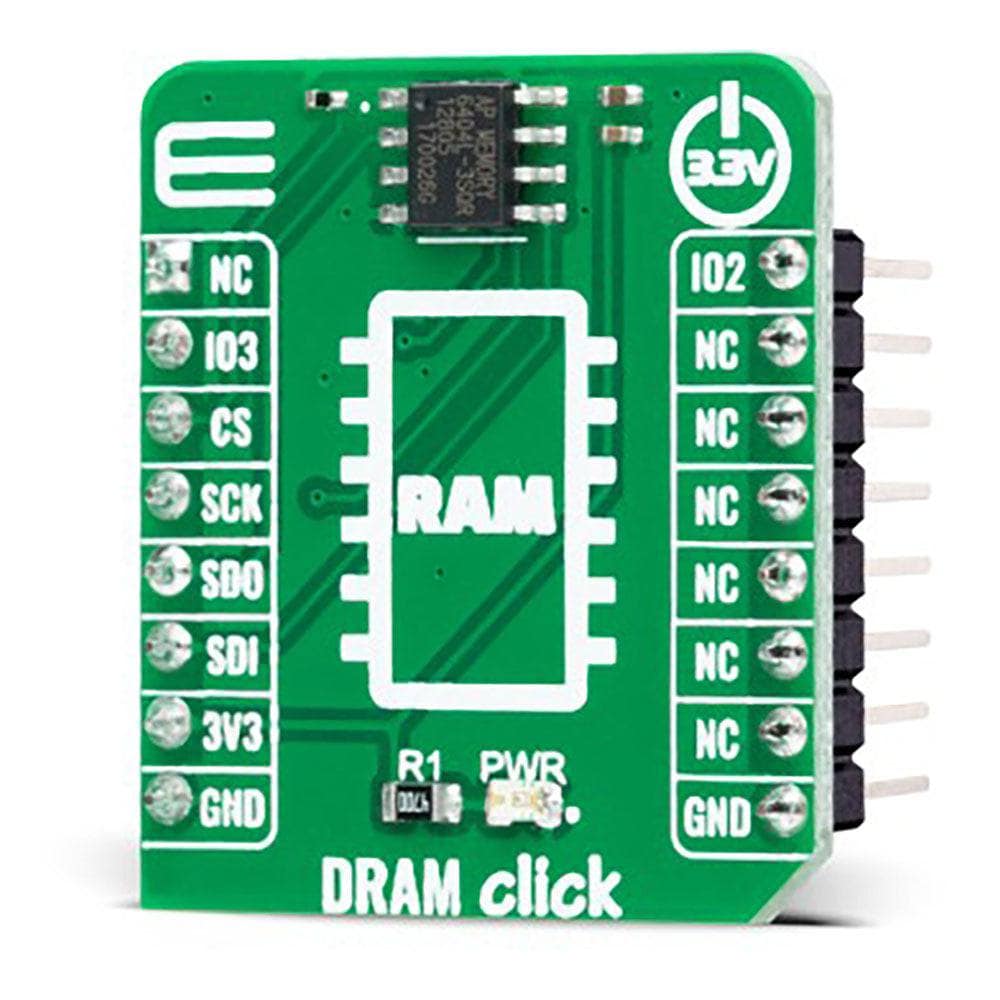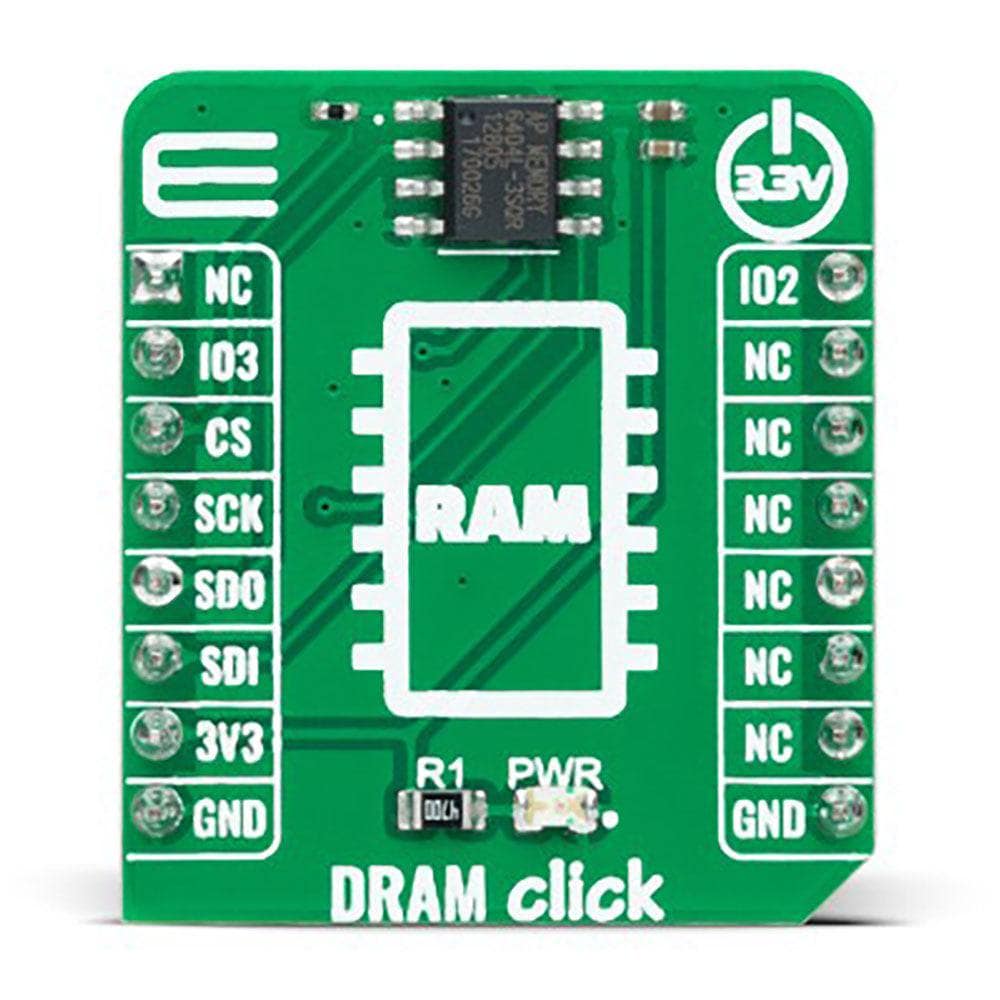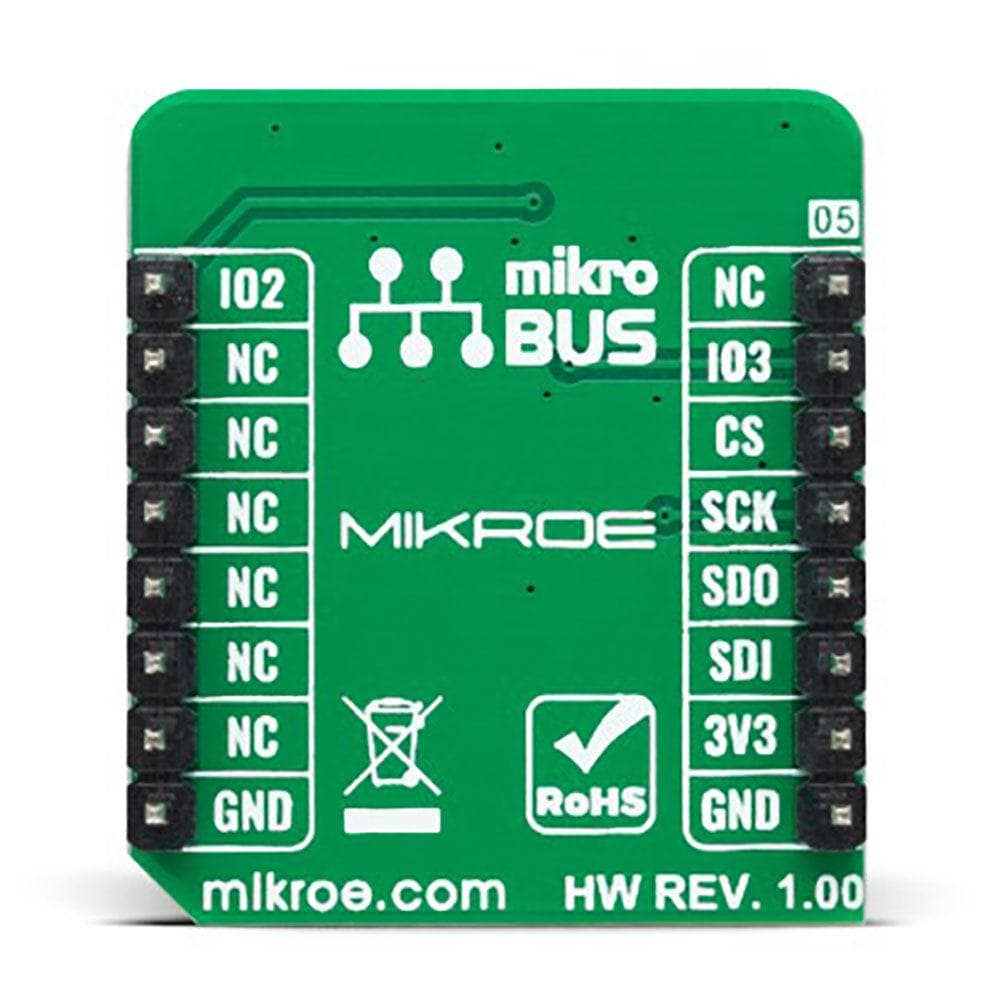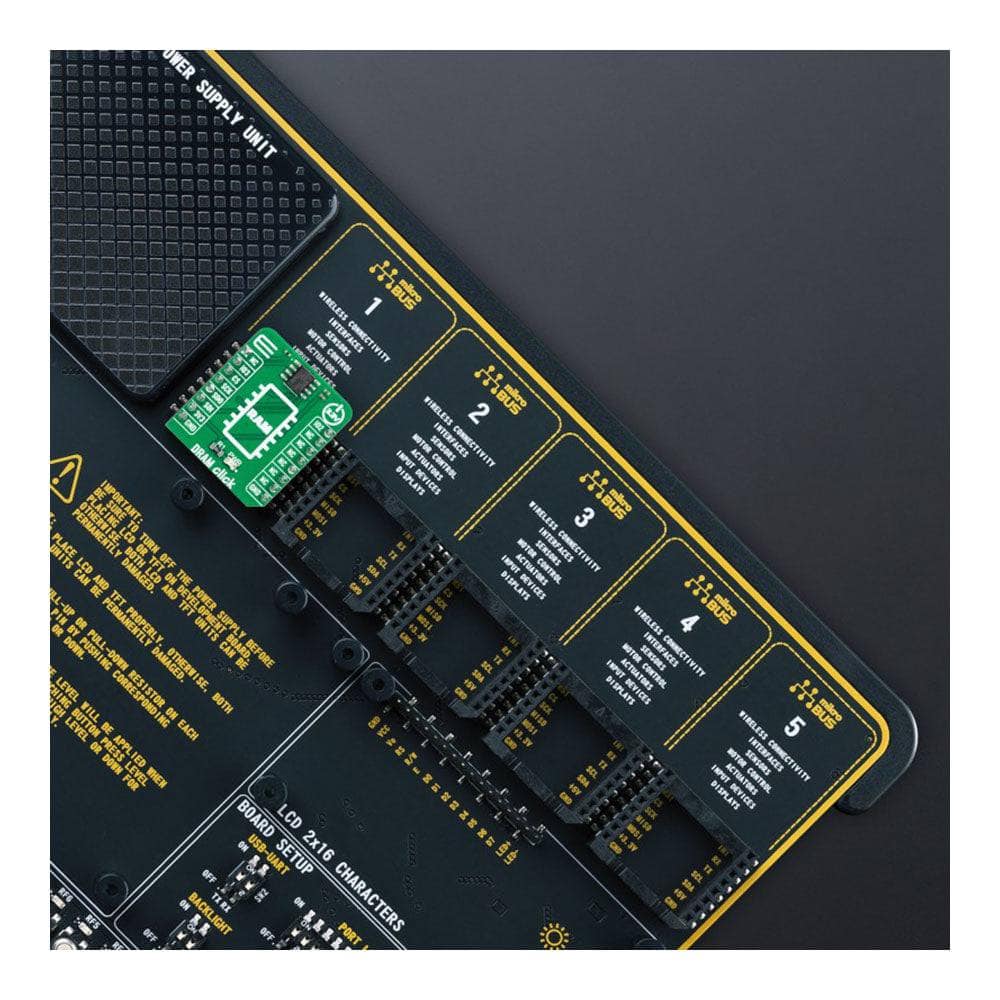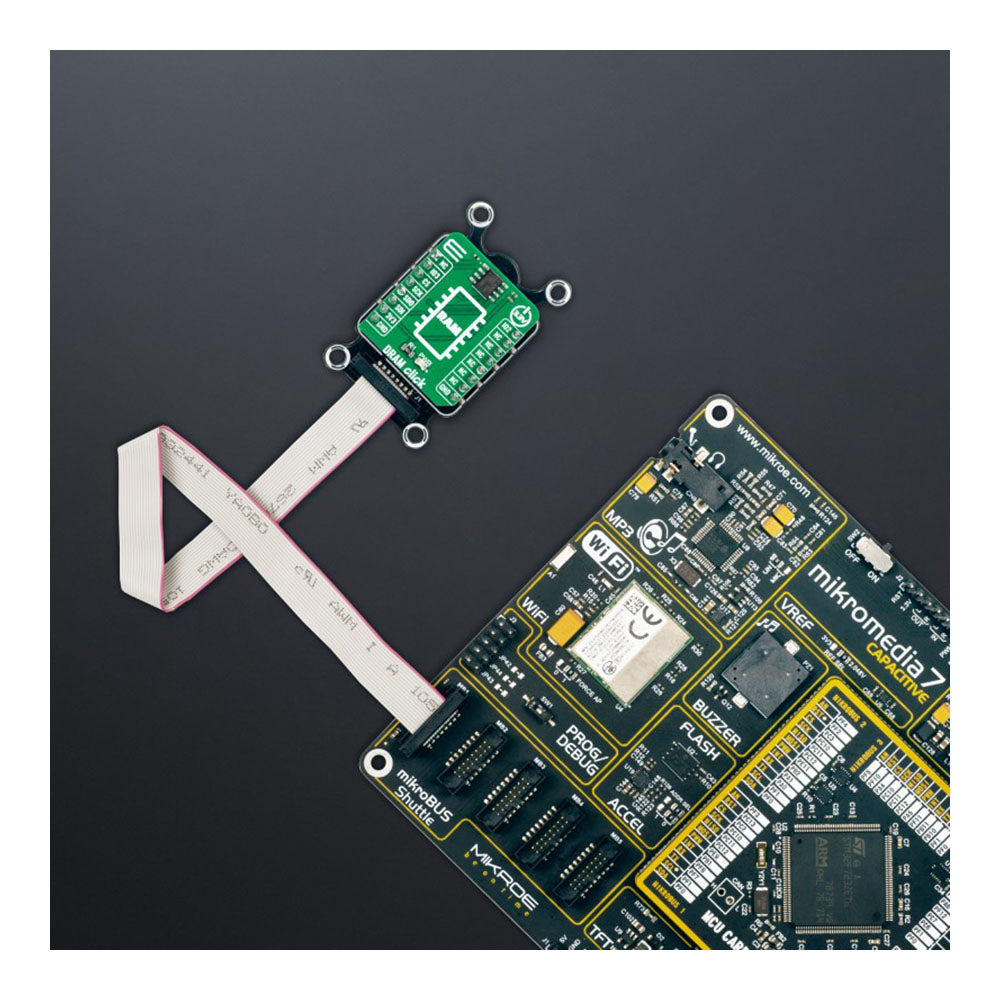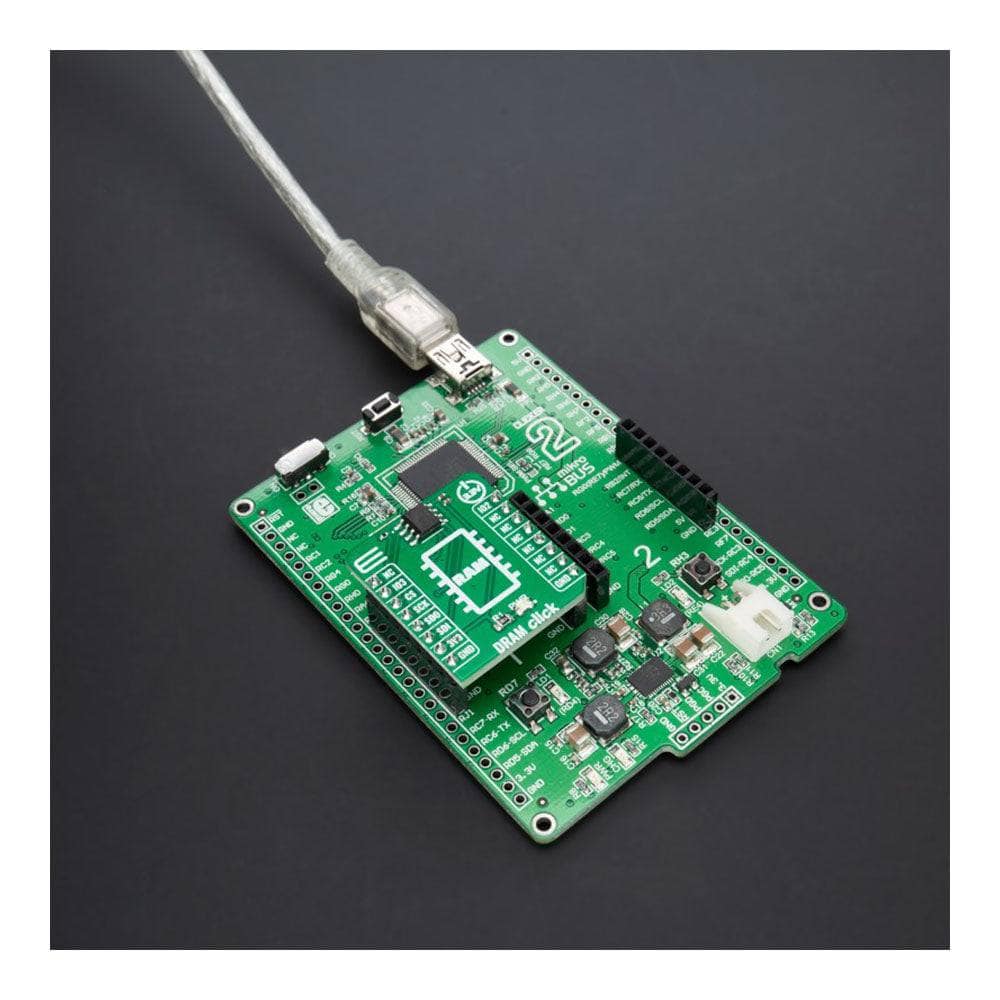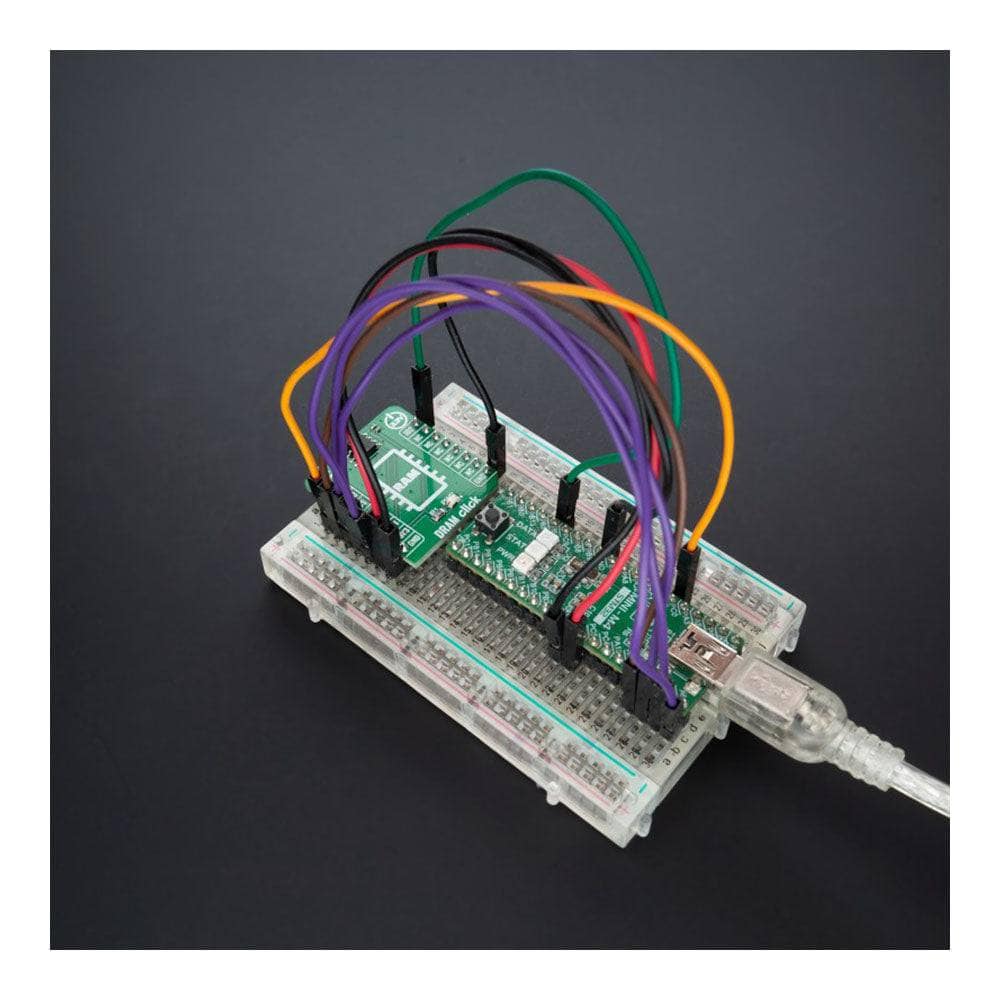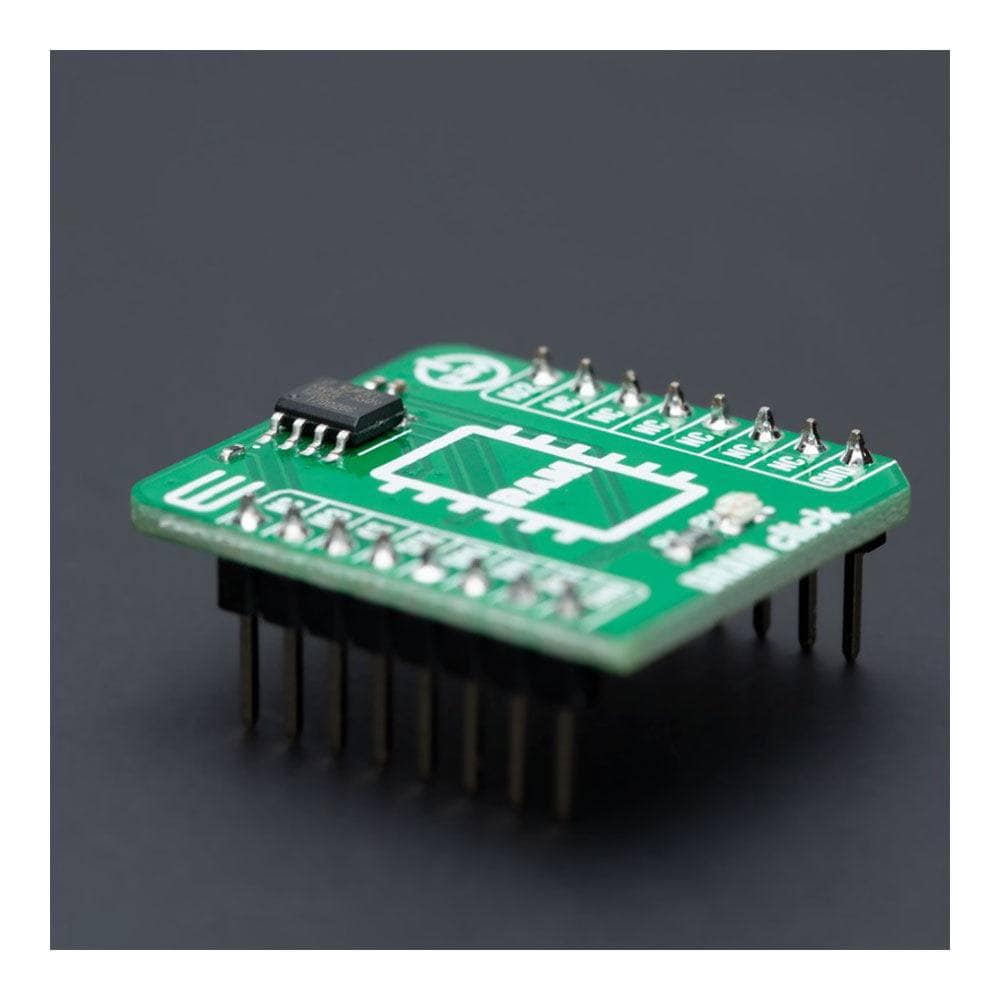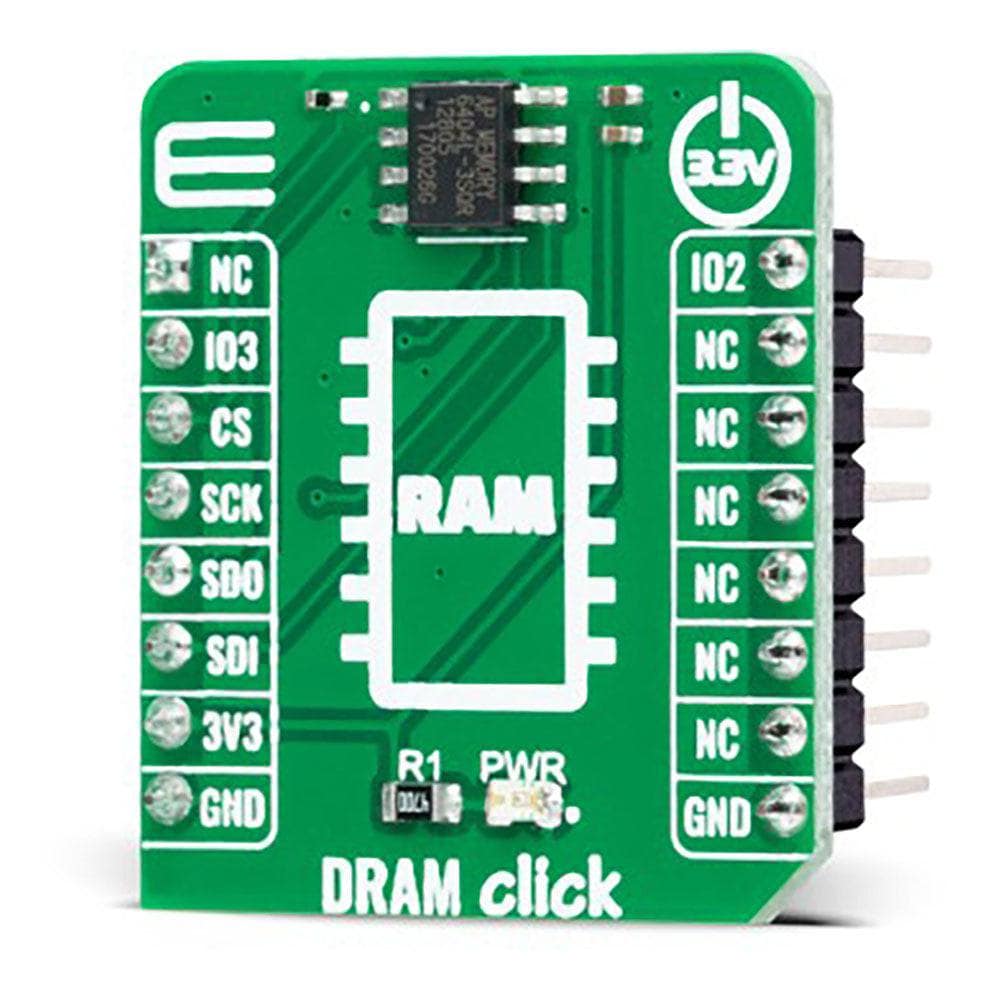
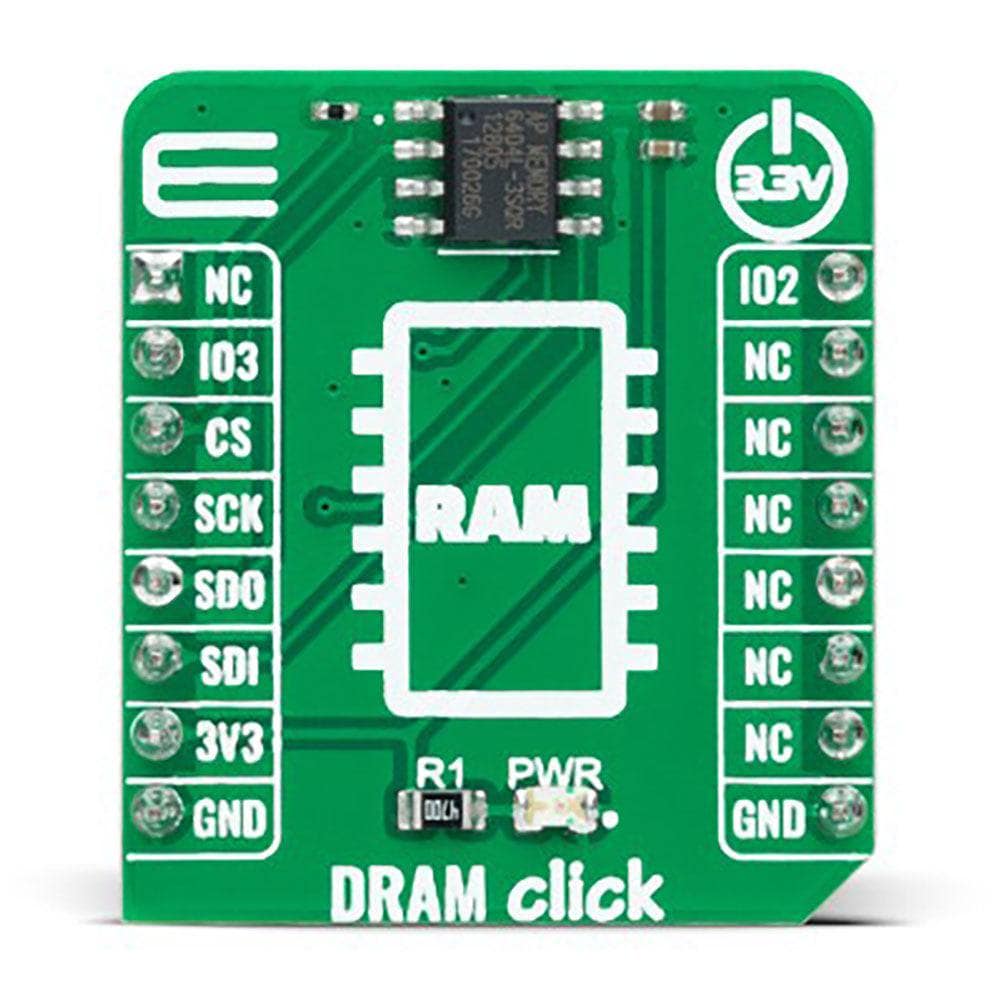
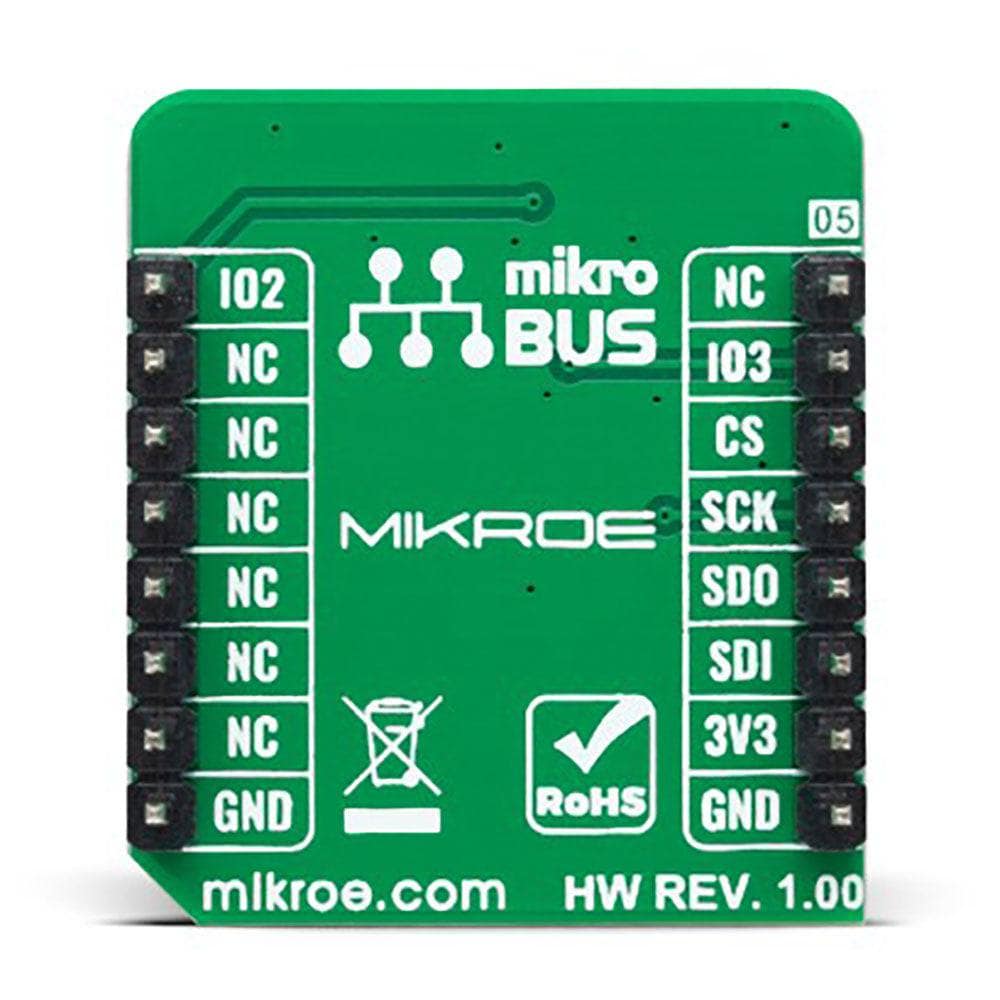
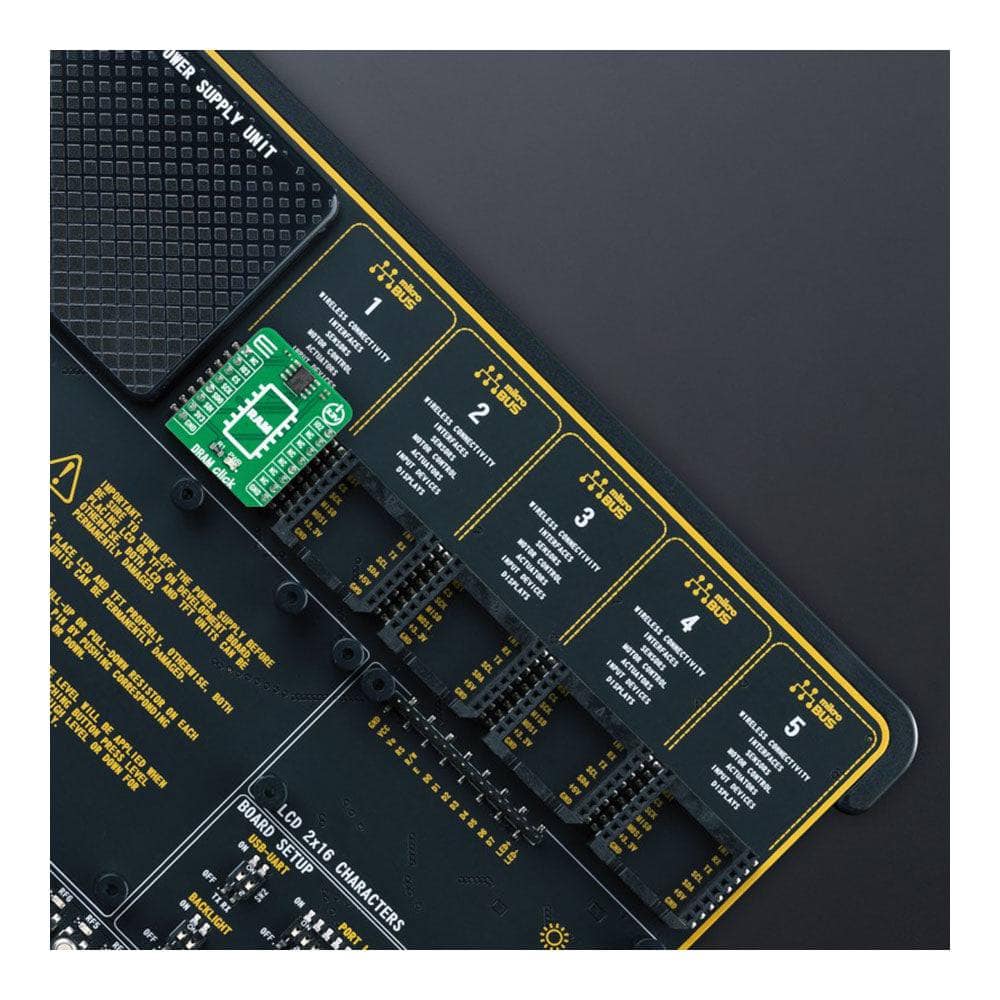
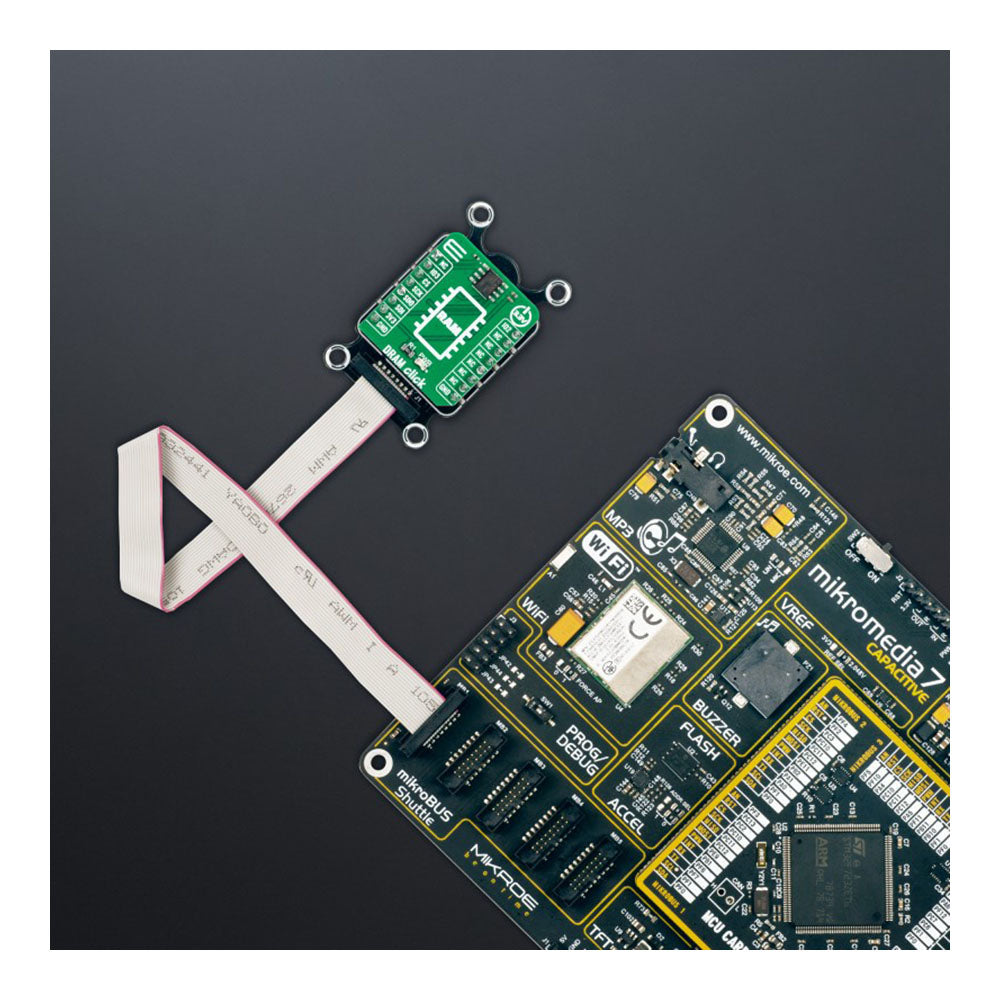
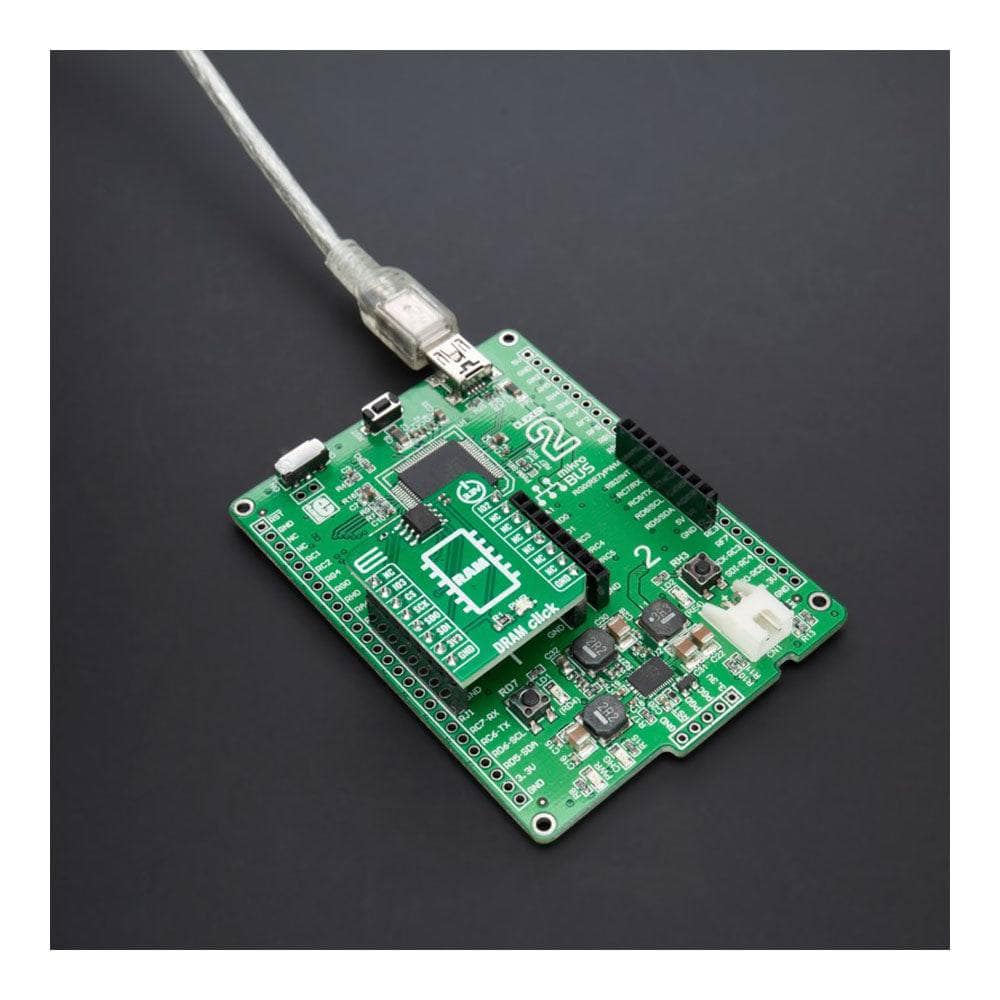
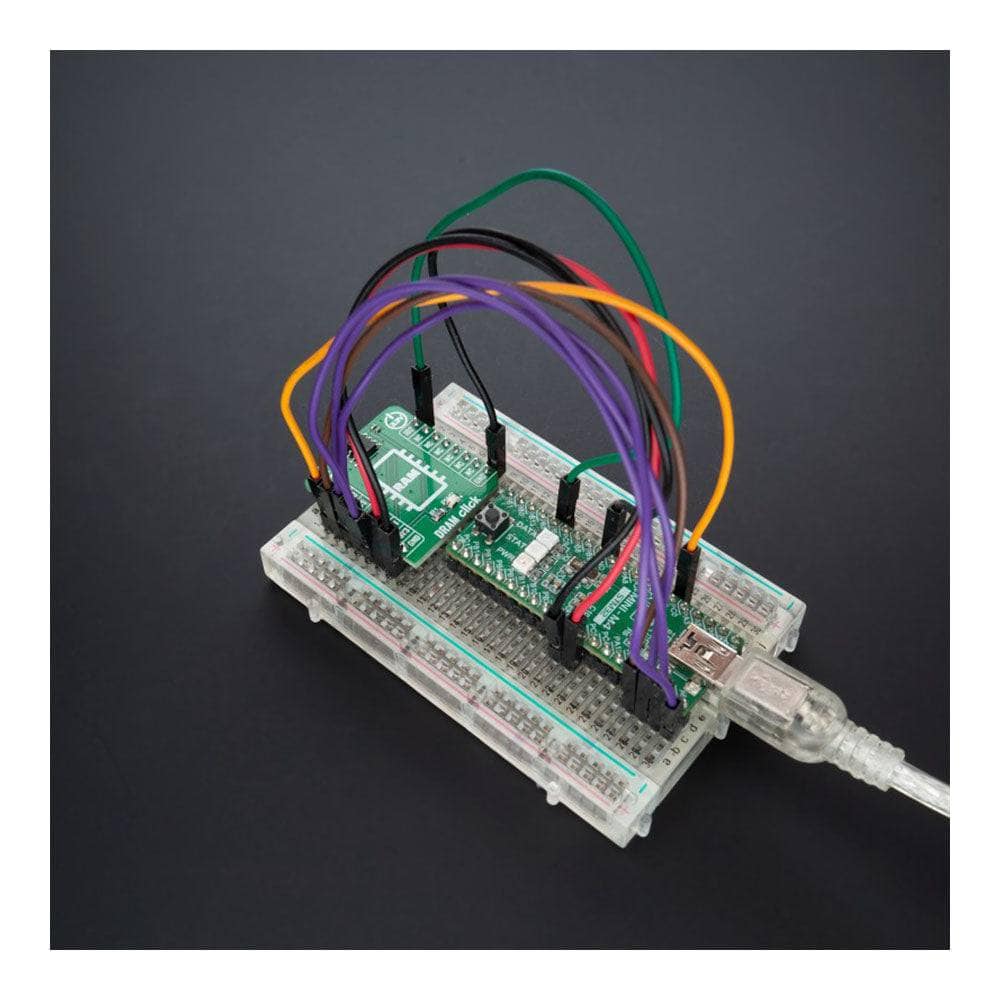
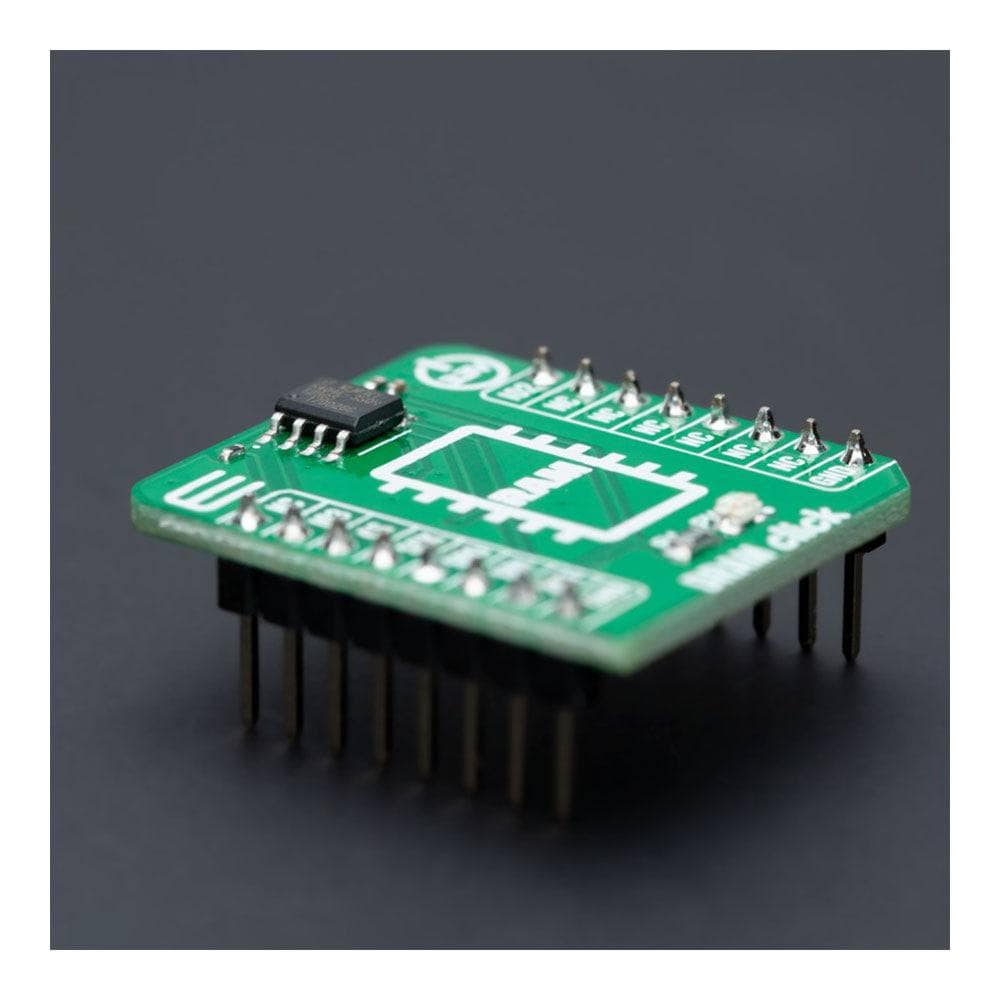
Key Features
Overview
Introducing the DRAM Click Board™
Upgrade your device's memory with the DRAM Click Board™, a compact add-on board representing a dynamic random-access memory solution. This board features the APS6404L-3SQR, 64Mb high-performance SPI/QPI PSRAM memory organized as 8M x 8 bits each from AP Memory.
High Performance and Low Power Consumption
The Pseudo-SRAM device of the DRAM Click Board™ features a high speed, low pin count interface and incorporates a seamless self-managed refresh mechanism to maximize the performance of memory read operation. With 4 SDR I/O pins and the ability to operate in SPI or QPI (quad peripheral interface) mode with frequencies up to 133 MHz, this Click board™ is most suitable for low-power and low-cost portable applications.
Simple Integration and Software Development
The DRAM Click Board™ is supported by a mikroSDK-compliant library, which includes functions that simplify software development. This Click board™ comes as a thoroughly tested product, ready to be used on a system equipped with the mikroBUS™ socket.
Upgrade your device's memory capabilities today with the DRAM Click Board™.
Downloads
Présentation de la DRAM Click Board™
Mettez à niveau la mémoire de votre appareil avec la DRAM Click Board™, une carte complémentaire compacte représentant une solution de mémoire vive dynamique. Cette carte est équipée de la mémoire PSRAM SPI/QPI hautes performances APS6404L-3SQR de 64 Mo organisée en 8 Mo x 8 bits chacun, d'AP Memory.
Hautes performances et faible consommation d'énergie
Le dispositif Pseudo-SRAM de la DRAM Click Board™ est doté d'une interface à grande vitesse et à faible nombre de broches et intègre un mécanisme de rafraîchissement autogéré transparent pour maximiser les performances de l'opération de lecture de la mémoire. Avec 4 broches d'E/S SDR et la possibilité de fonctionner en mode SPI ou QPI (quad device interface) avec des fréquences allant jusqu'à 133 MHz, cette carte Click™ est particulièrement adaptée aux applications portables à faible consommation et à faible coût.
Intégration simple et développement de logiciels
La carte DRAM Click Board™ est supportée par une bibliothèque compatible mikroSDK, qui comprend des fonctions qui simplifient le développement logiciel. Cette carte Click Board™ est un produit entièrement testé, prêt à être utilisé sur un système équipé du socket mikroBUS™.
Améliorez les capacités de mémoire de votre appareil dès aujourd'hui avec la DRAM Click Board™.
| General Information | |
|---|---|
Part Number (SKU) |
MIKROE-5337
|
Manufacturer |
|
| Physical and Mechanical | |
Weight |
0.02 kg
|
| Other | |
Country of Origin |
|
HS Code Customs Tariff code
|
|
EAN |
8606027387111
|
Warranty |
|
Frequently Asked Questions
Have a Question?
Be the first to ask a question about this.

